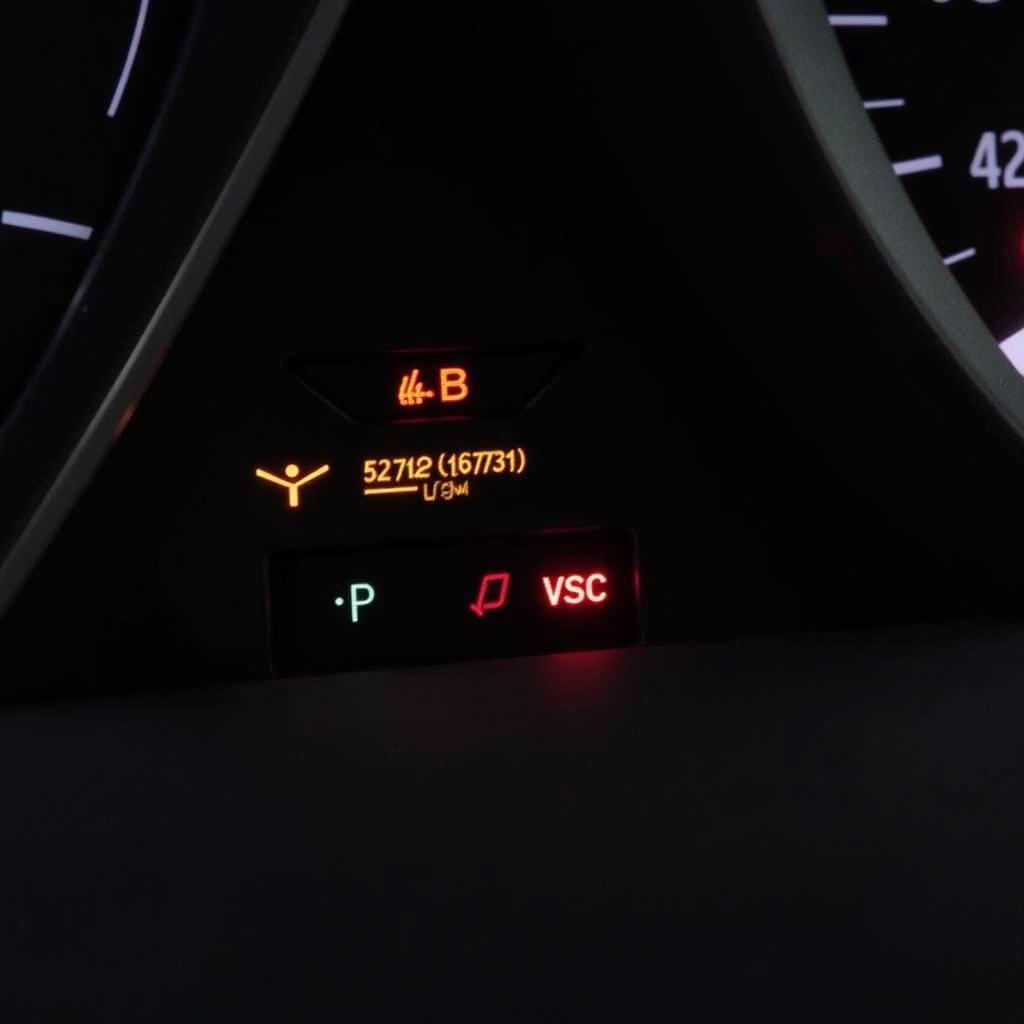The dreaded brake warning light – a beacon of worry for any car owner. While it often signals a simple issue, like low brake fluid, sometimes it’s more cryptic. If you’re grappling with a persistent “P52121409AB” code alongside an illuminated brake warning light, you’re in the right place. This guide will delve deep into the potential causes, diagnostic steps, and solutions for this specific issue, empowering you to take control and get back on the road safely.
Understanding the P52121409AB Code
Unlike universal OBD-II codes that apply to all vehicles, the P52121409AB code is manufacturer-specific. This means its meaning can vary depending on your car’s make and model. It’s crucial to consult your vehicle’s service manual or a trusted mechanic to decipher its exact definition. However, in many cases, this code points towards an electrical fault within the Electronic Brake Control Module (EBCM) or its associated wiring.
Common Causes and Symptoms
A persistent P52121409AB code often accompanies a range of symptoms that directly impact your driving experience. These can include:
- Constantly illuminated brake warning light
- Intermittent or complete loss of ABS functionality
- Erratic behavior from the electronic stability control system
- Spongy or unresponsive brake pedal feel
- Increased braking distance
Diagnosing the Problem: A Step-by-Step Approach
While visiting a qualified mechanic equipped with specialized diagnostic tools is recommended, understanding the basic diagnostic steps can be beneficial.
- Read the Code: Use an OBD-II scanner to retrieve the exact code stored in your vehicle’s computer.
- Inspect the Brake Fluid: Ensure the brake fluid reservoir is full and free of leaks.
- Check the Wiring: Visually inspect the wiring harness connected to the EBCM and related components for any signs of damage, corrosion, or loose connections.
- Test the Sensors: Use a multimeter to test the functionality of wheel speed sensors, as faulty signals can trigger the code.
- Evaluate the EBCM: In some cases, the EBCM itself may be faulty and require replacement or reprogramming.
Resolving the Issue: From Simple Fixes to Professional Assistance
Depending on the root cause, resolving the P52121409AB code can range from straightforward fixes to more involved procedures:
- Replenishing Brake Fluid: Low brake fluid can trigger the warning light. Topping off the fluid and checking for leaks is a simple yet crucial first step.
- Repairing or Replacing Damaged Wiring: If you discover any frayed, corroded, or disconnected wires, repairing or replacing them can often resolve the issue.
- Addressing Faulty Sensors: Wheel speed sensors are prone to wear and tear. Replacing a malfunctioning sensor can restore proper communication with the EBCM.
- EBCM Reprogramming or Replacement: If the EBCM is identified as the culprit, it may require reprogramming or replacement. This is a complex procedure best handled by a qualified professional.
“Ignoring a persistent P52121409AB code and its accompanying warning light can compromise your safety and potentially lead to more severe brake system issues down the line.” – John Miller, Senior Automotive Technician
Prevention Tips: Maintaining a Healthy Brake System
Taking proactive steps to maintain your vehicle’s braking system can significantly reduce the chances of encountering the P52121409AB code and other brake-related problems:
- Regular Brake Fluid Checks: Inspect your brake fluid level and condition at least once a month.
- Timely Brake Inspections: Adhere to your vehicle manufacturer’s recommended brake inspection schedule.
- Quality Brake Fluid: Use high-quality brake fluid that meets the specifications outlined in your owner’s manual.
- Avoid Aggressive Driving: Harsh braking habits can accelerate wear and tear on your brake components.
Conclusion
The P52121409AB brake warning light, though potentially concerning, is often resolvable with timely diagnosis and appropriate action. By understanding the code’s implications, following the diagnostic steps, and implementing preventative measures, you can ensure a safe and enjoyable driving experience. Remember, if you’re unsure about any aspect of your vehicle’s brake system, seeking professional assistance is always the safest course of action.
Frequently Asked Questions
1. Can I drive my car with the P52121409AB code active?
While you might technically be able to drive, it’s highly discouraged. Driving with a potential brake system fault can compromise your safety and lead to further damage.
2. How much does it cost to fix the P52121409AB code?
The cost varies depending on the root cause. Simple fixes like fluid top-ups are inexpensive, while EBCM replacements can be costly.
3. Is the P52121409AB code the same for all car models?
No, this code is manufacturer-specific. Consult your service manual or a mechanic for its exact meaning in your vehicle.
4. Can I reset the P52121409AB code myself?
While you can temporarily clear the code with an OBD-II scanner, it will likely return if the underlying issue is not addressed.
5. How often should I get my brakes inspected?
Refer to your vehicle manufacturer’s recommended maintenance schedule for specific brake inspection intervals.


